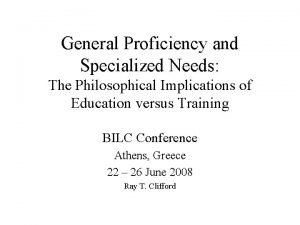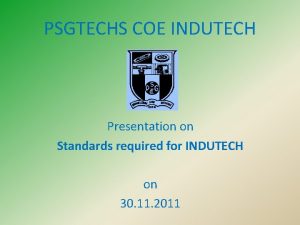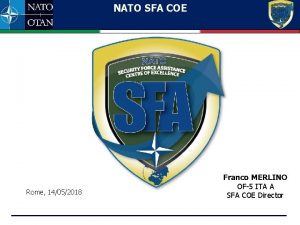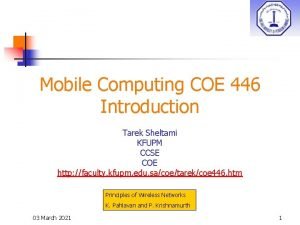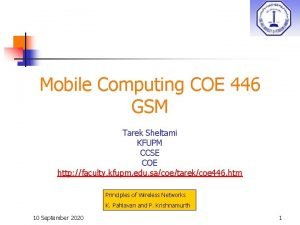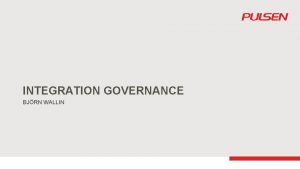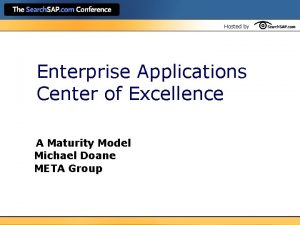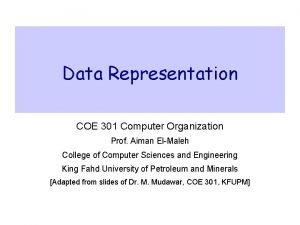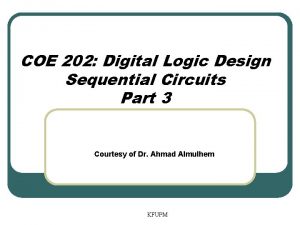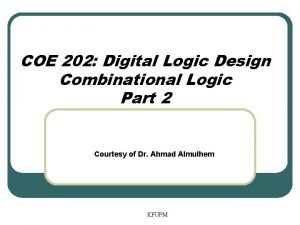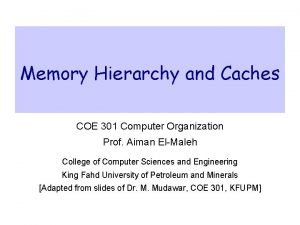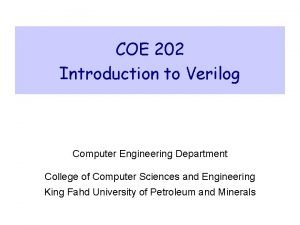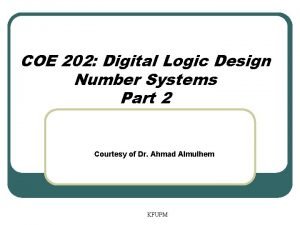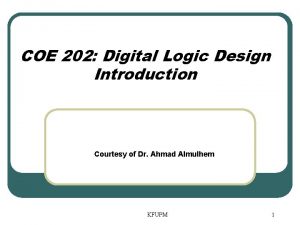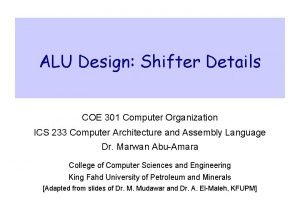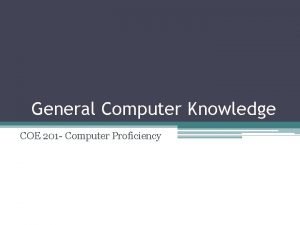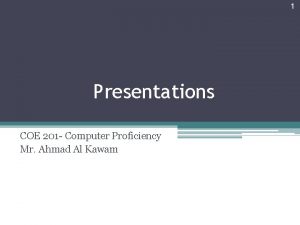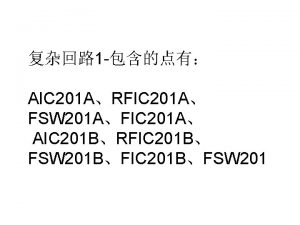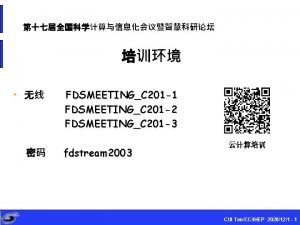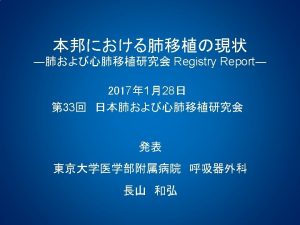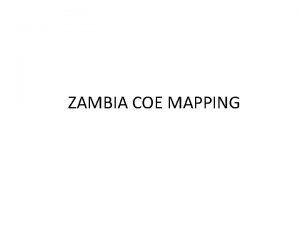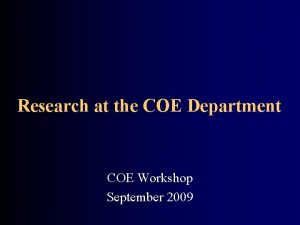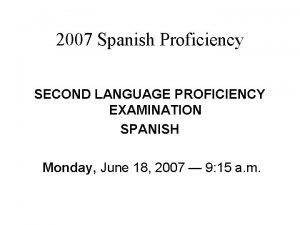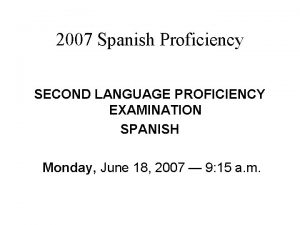1 General Computer Knowledge COE 201 Computer Proficiency


















- Slides: 18

1 General Computer Knowledge COE 201 - Computer Proficiency Mr. Ahmad AL Kawam

2 Outline • Binary Representation • Computer Parts ▫ CPU ▫ Memory Primary Secondary Storage Capacity ▫ I/O • Operating System

3 Binary Representation • Binary Form relies on 2 digits ▫ 0 : Zero. ▫ 1 : One. • In order to represent “M” characters we need n bits where M = 2 n. • Computers understand Machine Language (Strings of 0 and 1) • All characters and numbers get translated into “ 1”s and “ 0”s

4 Binary decimal • Binary to decimal 1 0 0 1 1 0 1 (binary) = 1 x 26+0 x 25 +0 x 24+1 x 23 + 1 x 22+ 0 x 21 +1 x 20 = 77 (decimal) • Decimal to binary 19 (decimal) 19 = 2 x 9 + 9 = 2 x 4 + 4 = 2 x 2 + 2 = 2 x 1 + 1 = 2 x 0 + 1 1 0 0 1 19 (decimal) = 10011 (binary)

5 Computer Parts

6 CPU • Central Processing Unit • Electronic circuits that processes data. • Composed of: ▫ Control Unit ▫ Arithmetic/Logic Unit • The Control Unit interprets the instructions. • The Arithmetic/Logic Unit performs the logical and arithmetic operations

7 Evolution of CPUs Generation: • • 8086 80 x 86 Pentium MMX Pentium III Celeron • • Pentium IV Centrino Dual Core 2 Duo Core 2 Quad Core i 3, i 5, i 7 …

8 Evolution of CPUs Clock Speed: • Amount of time to execute a set of instructions. • Hz(Hertz) ▫ 1 Hz = one cycle per second. • KHz(Kilo Hertz) ▫ 1 KHz= one thousand cycles per second. • MHz(Mega Hertz) ▫ 1 MHz= one million cycles per second. • GHz(Giga Hertz): ▫ 1 GHz = one billion cycle per second.

10 Types of Memory Two types of memory: • Primary Storage Devices ▫ CPU registers ▫ Memory cache ▫ Main Memory Capacity Access Time • Secondary Storage Devices ▫ Hard Disks ▫ CDs ▫ DVDs Access Time Capacity

12 RAM • Random Access Memory • • Computer’s temporary/main memory Exists as chips on the motherboard near the CPU Stores data or programs while they are being used When the program or file is closed, the data is removed from RAM • Requires power! • The amount of RAM you have on your computer is crucial in determining how many programs can be opened (running) and how much data is available for each program

13 Secondary Storage Devices • Auxiliary storage devices ▫ used to store instructions and data when they are not being used in memory. • Common types are: ▫ Hard Disks Consists of one or more rigid metal platters coated with a metal oxide material that allows data to be recorded magnetically on the surface of the platters. ▫ CDs ▫ DVDs

14 HD Structure

15 HD Structure (continued)

16 Storage Capacities • Main unit is Binary Digit or Bit. • • • 1 Byte = 8 Bits. 1 KB = 1 Kilo Byte = 2^10 Bytes = 1024 Bytes 1 MB = 1 Mega Byte = 2^20 Bytes = 1024 KB 1 GB = 1 Giga Byte = 2^30 Bytes = 1024 MB 1 TB = 1 Tera Byte = 2^40 Bytes = 1024 GB

17 I/O: Input Devices • Hardware device that sends information to the computer. ▫ keyboard, mouse, ▫ digital camera, scanner ▫ Microphone etc

18 I/O: Output Devices • Hardware device that provides feedback to the user. ▫ Screens/display devices ▫ Printers ▫ Speakers

19 Operating System • First program that starts when PC is ON. • Perform hardware checks. • Translator between user and hardware. ▫ User issues commands in Human Language. ▫ OS translates commands to Machine Language. • Provides user with easy-to-use interface. • Provides user with File Management Capabilities. • Supports other software accesses of HW.

20 Mother Board
